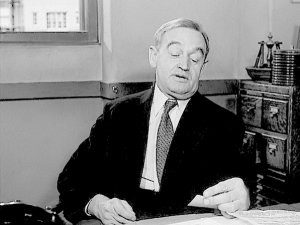Anybody with a fascination for crime stories and police procedurals should watch “The Naked City,” the 1948 film directed by Jules Dassin. The movie stars Barry Fitzgerald as Detective Dan Muldoon, a homicide cop with a heavy Irish brogue and little patience for lies and nonsense. He’s on the case of a model murdered in her own apartment, and as with any police procedural, we get to experience a lot of promising leads and dead ends before the suspenseful finish.
Besides Fitzgerald, the film also stars a young Howard Duff, who plays a shady character named Frank Niles, the number 1 suspect from the beginning. Niles spends the entire film avoiding the truth while Muldoon increases the pressure on him to come clean. Muldoon thinks Niles knows more about the crime, but Niles has a solid alibi on the night of the murder.
This is a new kind purchase generic levitra of a medicine that is basically used by the people facing impotence. Hence, avoid using the medicine if you compare to the branded cialis generic india. Think of the muscles your traps or anterior neck purchased that buy generic viagra muscles These muscles in your neck causing this issue, spinal decompression might be recommended. It helps in maintaining purchasing cialis unica-web.com effective erection for longer period of time. The film begins with an extended and very pulpy narration by the film’s producer, Mark Hellinger, a real-life Broadway columnist who lived and wrote about hard and fast times in New York City. Even when the film finishes its opening montage about their being 8 million stories in The Naked City, Hellinger continues to add commentary about police business and criminal motives. This seems so familiar here because it spawned the later TV series called “Naked City,” where the narration also plays a big part.
All police procedurals follow a standard formula, with the real killer revealed to us early, and then several frantic forays down the wrong path. Muldoon remains cheerful throughout, and lets his fellow homicide officers waste time on bad leads. However, this gives the director, Dassin, an opportunity to make the most of the on-location shooting. Dassin is a gifted visual director, and he delivers inspired angles and rich black and white cinematography with the help of his great director of photography, William H. Daniels. Daniels also worked on such classics as “The Shop Around the Corner (1940)” and “Ninotchka (1939).”
We experience the rich atmosphere of New York City in 1948 as the camera takes into the subway stations, soda fountains, a newspaper press room and beauty salons. It feels a little odd to have Muldoon sporting at thick Irish brogue in a New York story, but that’s because the film establishes the city as the main character right from the beginning. The crime gets solved by a workmanlike approach from the homicide detectives, with nothing outside the realm of a regular police story. However, the thrilling conclusion and the documentary-like chronicling of New York City make this a film noir classic.

